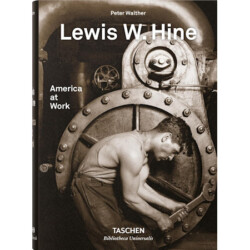The Photographer Who Exposed Child Labor in the Early 1900’s
In the early 1900s, child labor was rampant in the United States, with millions of children toiling in dangerous and exploitative conditions. It was in this bleak landscape that photographer Lewis Hine emerged as a tireless advocate for change. Armed with his camera, Hine embarked on a courageous and groundbreaking mission to expose the grim realities of child labor and ignite a national movement to eradicate it.

Born in 1874 in Oshkosh, Wisconsin, Lewis Hine would later become known for his iconic photographs that shed light on the plight of working children. After studying sociology at the University of Chicago, Hine combined his passion for social reform with his love for photography, using his camera as a tool for social change.

Hine’s journey began in 1908 when he was hired by the National Child Labor Committee (NCLC) to document child labor across the country. Over the next decade, he traveled to industrial centers, mines, farms, and factories, often assuming a false identity to gain access to the workplaces where children labored. Hine’s dedication and fearlessness enabled him to capture the harsh and often heartbreaking realities faced by young workers.

One of Hine’s most impactful series of photographs documented the lives of child laborers in the textile mills of the northeastern United States. His images revealed children as young as six operating dangerous machinery, enduring grueling hours, and suffering from appalling living conditions. These striking photographs served as a wake-up call to the nation, forcing people to confront the human cost of unregulated labor practices.

Hine’s approach to photography was not merely documentary; it was a form of advocacy. In contrast to the prevailing sentiment that child labor was a necessary evil, Hine’s images aimed to elicit empathy and outrage, compelling viewers to demand change. His photographs were not passive observations but powerful instruments of social critique and catalysts for reform.

In addition to capturing the harsh realities of child labor, Hine also used his photographs to give a voice to the young workers themselves. By interviewing the children he photographed and documenting their personal stories, he humanized their experiences and empowered them to speak out against their exploitation. This groundbreaking approach helped to dispel the prevailing notion that child labor was a tolerable aspect of industrial progress.

Hine’s photographs were instrumental in shaping public opinion and galvanizing political action. His compelling images were prominently featured in newspapers, magazines, and exhibitions, reaching a wide audience and provoking widespread outrage. Politicians, activists, and concerned citizens were moved to take action, leading to the passage of labor laws and reforms aimed at protecting child workers.

Hine’s relentless efforts to expose and eradicate child labor through his photography not only influenced public opinion but also left a lasting legacy in the history of social reform. His work with the NCLC resulted in the passage of the Keating-Owen Child Labor Act in 1916, which imposed restrictions on child labor in interstate commerce. While the act was later struck down by the Supreme Court, it laid the groundwork for future legislation and set a precedent for the regulation of child labor in the United States.

Lewis Hine’s legacy extends far beyond the images he captured. His photographs were instrumental in sparking a national conversation about child labor and helped to shape the trajectory of labor laws and social policies in the United States. His pioneering use of photography as a tool for social change serves as an inspiration to contemporary photographers and activists seeking to shine a light on social injustices and effect meaningful change.

In a world still grappling with the exploitation of children, Lewis Hine’s unwavering commitment to social justice provides a powerful example of the transformative potential of photography. Through his lens, he not only captured the grim realities of child labor but also instigated a movement that continues to resonate today, reminding us of the enduring power of images to provoke empathy, incite action, and forge a more just and compassionate society.
Recommended Products:











